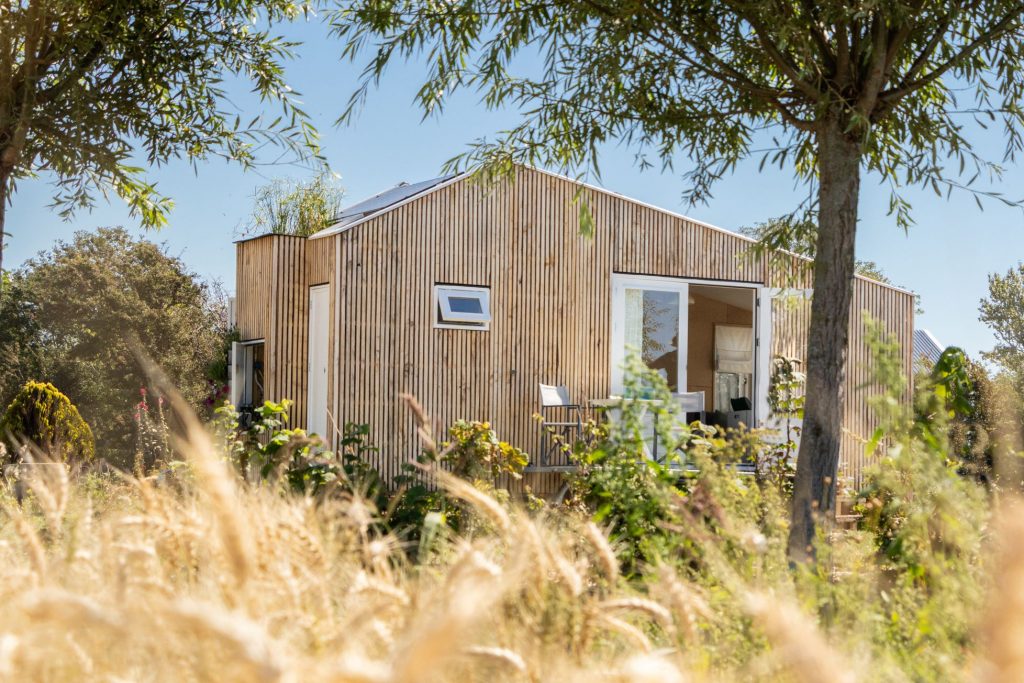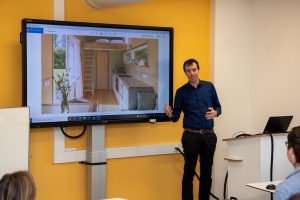
Building an appealing, sustainable holiday home using natural and recycled materials obtained from the island. That was the assignment that Nescio Midavaine and Martin van Overveld set themselves in 2018. After a lot of headaches and busy weekends in just over two years, and with the help of the Biobased Building lectorate of HZ University of Applied Sciences, the friends succeeded. The island house has now been traveling around the island for almost two years and is very popular among tourists.
Midavaine and Van Overveld, from Zeeland, know each other from their Architecture and Construction Engineering studies at the HZ and later TU Eindhoven. As part of his master, Midavaine specialised in property management and development, Van Overveld specialised in Architecture.
In the Island House project, they combined their passions for sustainability and recreation. Realising a moveable, biobased, and circular holiday home turned out to be a huge challenge. “During construction, you run into all sorts of things and new questions constantly arise”, a cheerful Midavaine tells us. “For example, you don’t know where you might find what materials, need to study the properties of materials like flax and mycelium and hardly anything is readily available when you need it. The circular aspect adds additional challenges. We definitely did not make things easier on ourselves with that, but if we disassemble the house in twenty or fifty years, everything can be used again.”
 Tourists
Tourists
During construction, Midavaine and Van Overveld sought support from the Biobased Building lectorate of the HZ. Various researchers and students contributed to the realisation by performing material studies. The Island Home which, in addition to biobased and circular, is self-sufficient, has been moving around Schouwen-Duiveland for nearly two years now. “The tiny house is travelling with the growth of the crops used to construct it. So, while flax is in bloom, it is situated next to a flax field. We used flax, for example, for the walls, the insulation materials, and the kitchen worktop.”
When tourists book the house, they are informed about the various possibilities offered by local, biobased and circular materials.
Network
During the project, Midavaine shared his knowledge with the HZ. He is linked to the Biobased Building lectorate as an advisor, regularly giving guest lectures, and is a forerunner of the Knowledge and Innovation network Circular Building Zeeland. There, knowledge institutes, governments, and people from the professional practice exchange experiences, for example through knowledge sessions.
‘If we dismantle the house in twenty or fifty years’ time, we can reuse everything’
Midavaine is particularly interested in preparing youths for a circular and biobased future. “In the coming years, demolition work in Zeeland will yield the same quantity of materials as is required for newbuilds”, he tells us. “If we had been building circularly in the past, we would have benefitted from it today. Biobased and circular building has the future. The national government wants 50 percent of building works to be circular by 2030, increasing to 100 percent by 2050. So, we need to take that step right now.”
